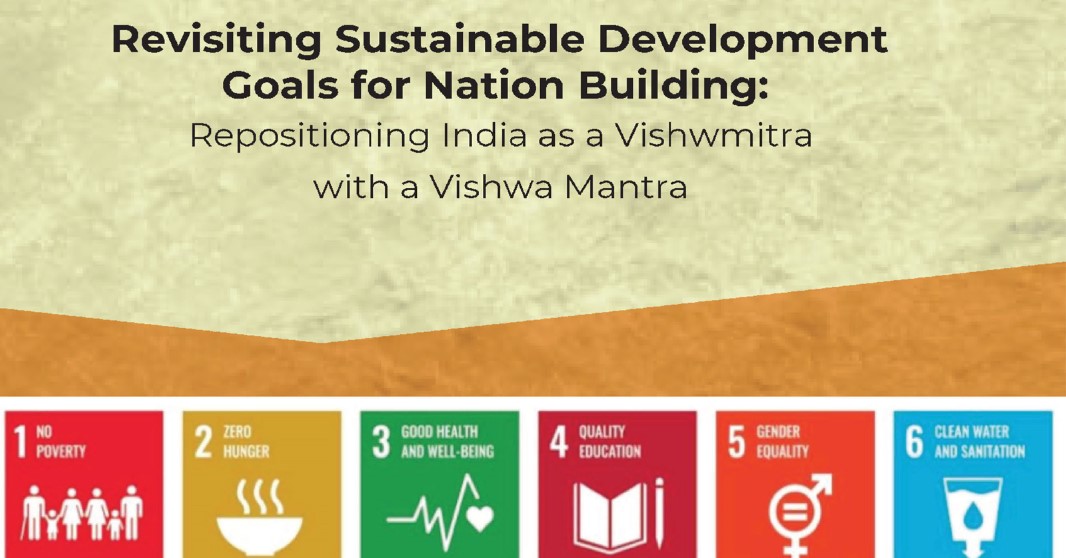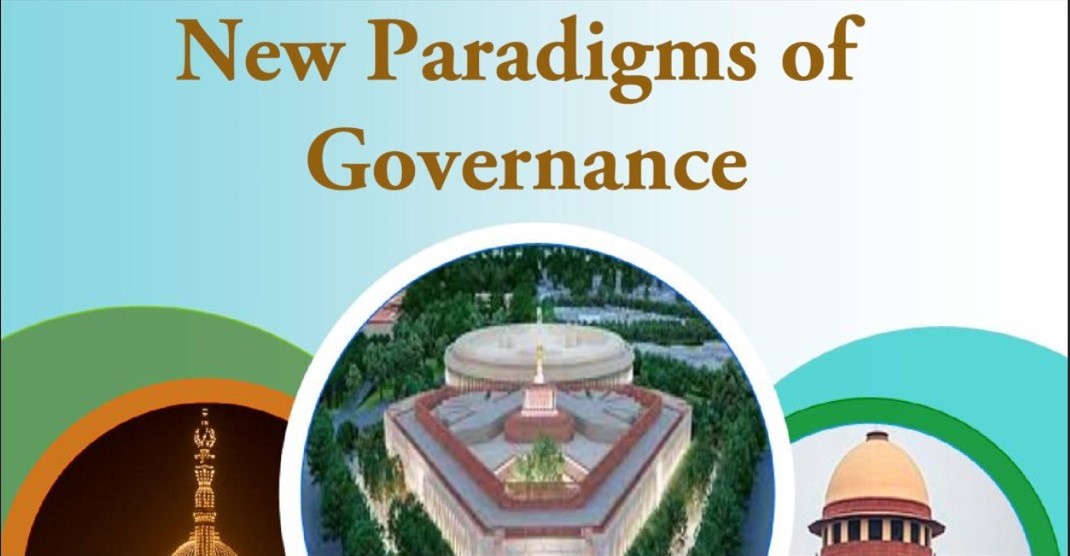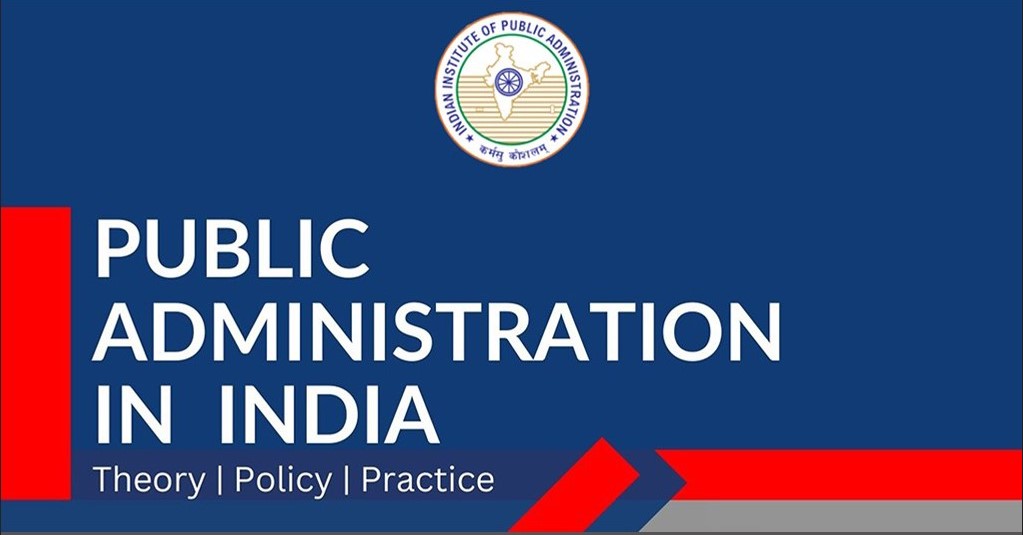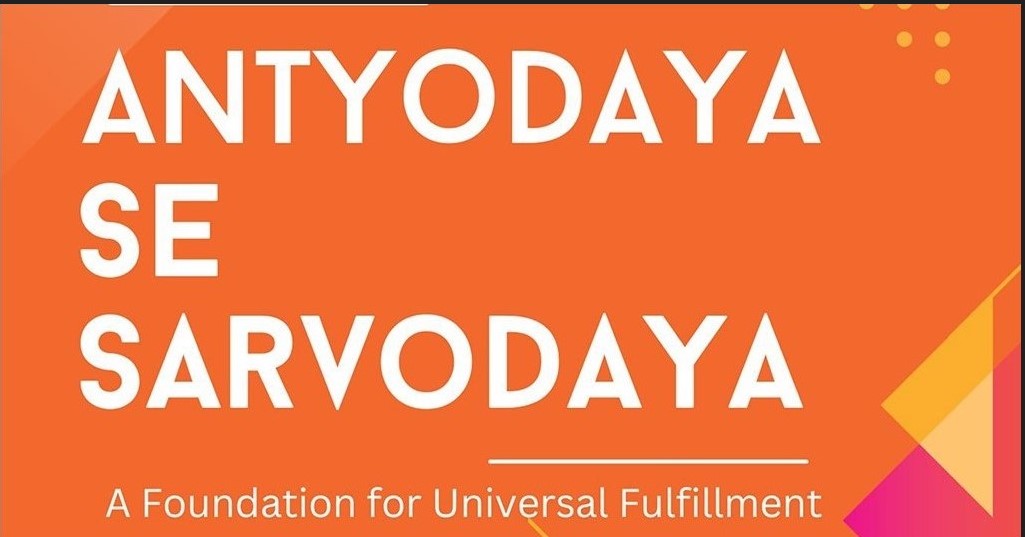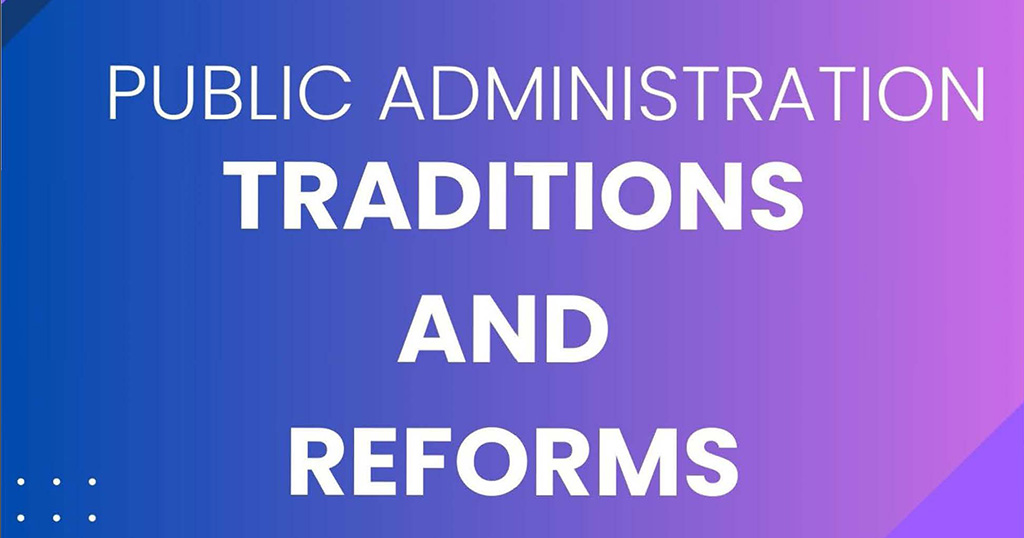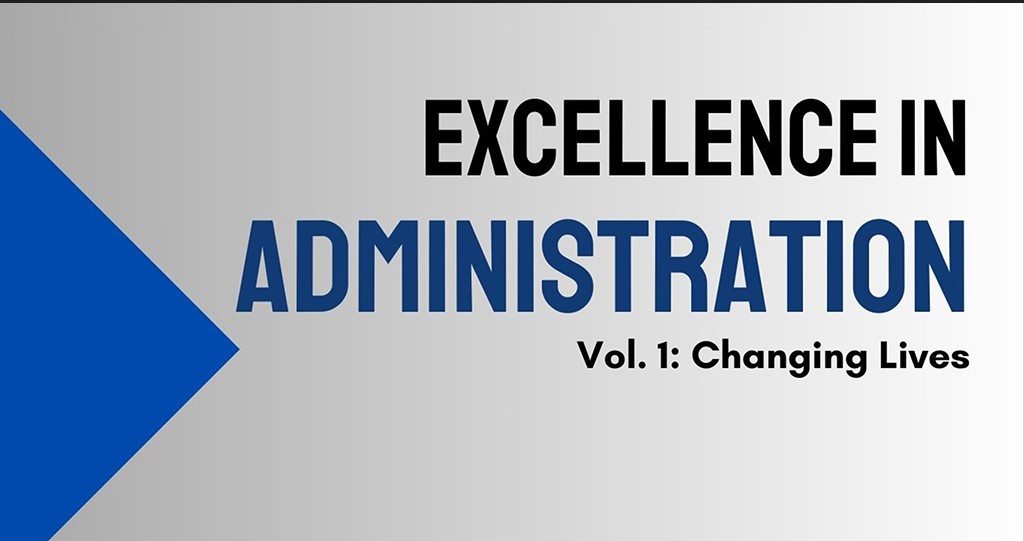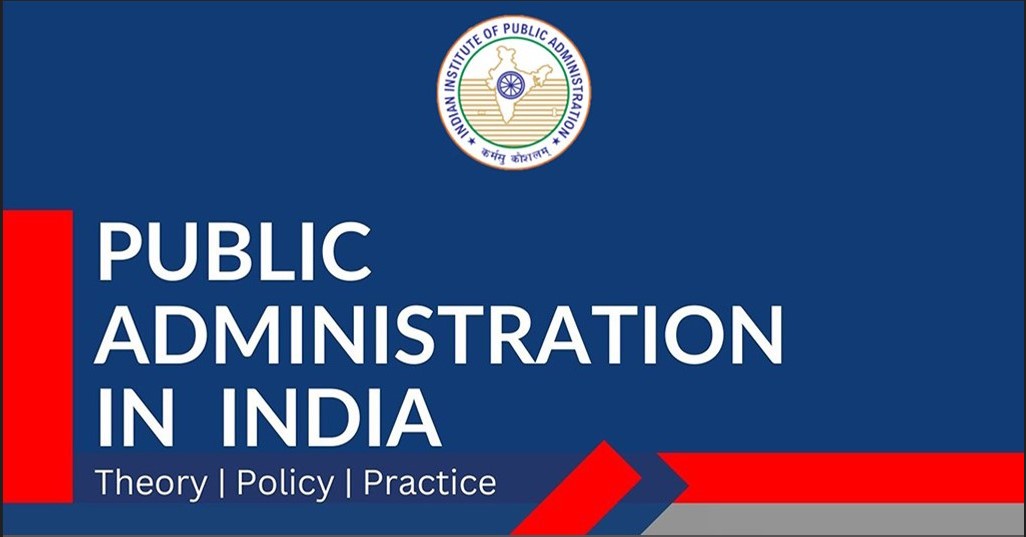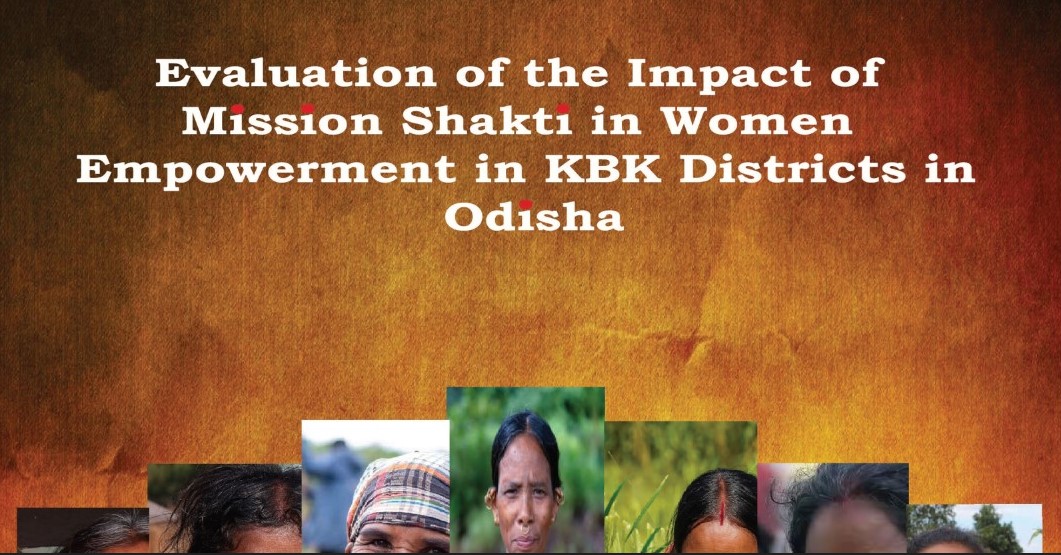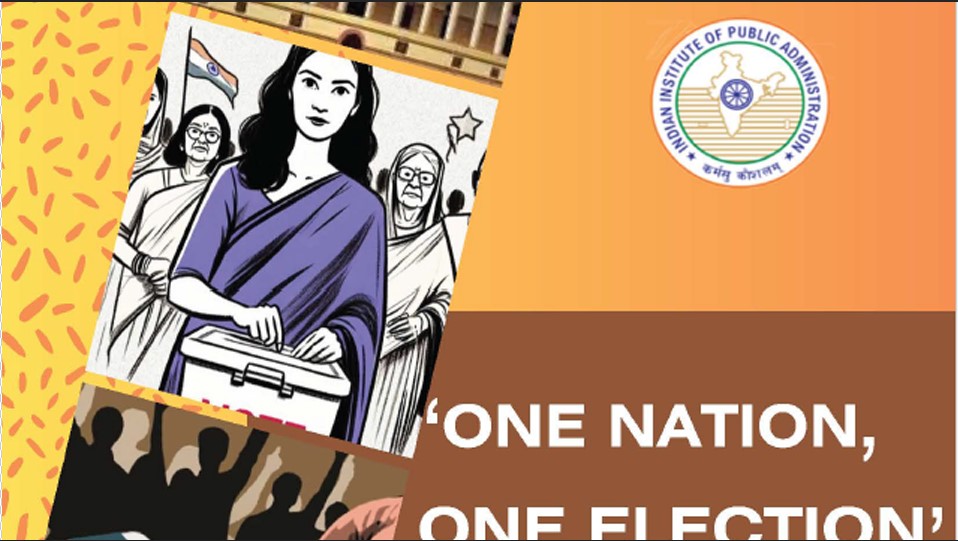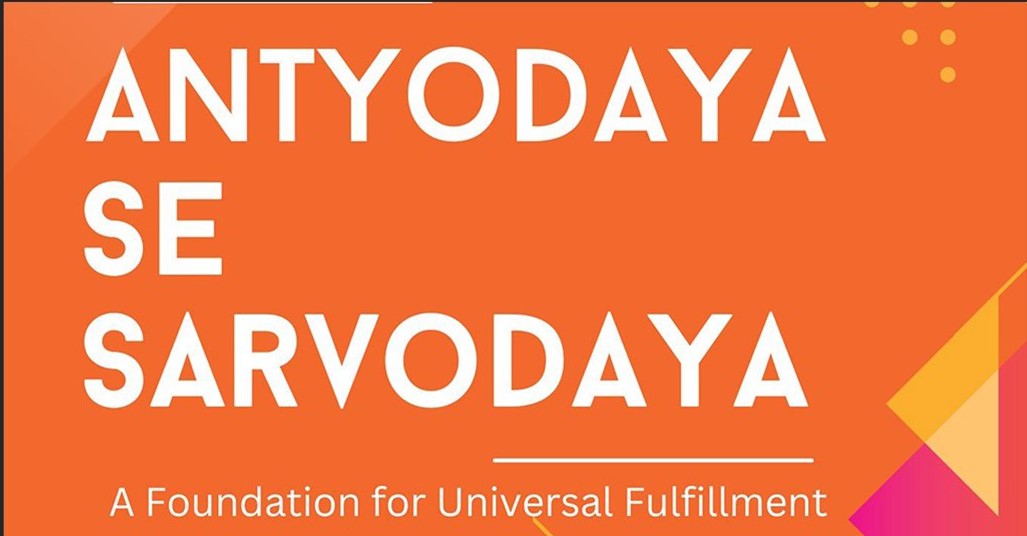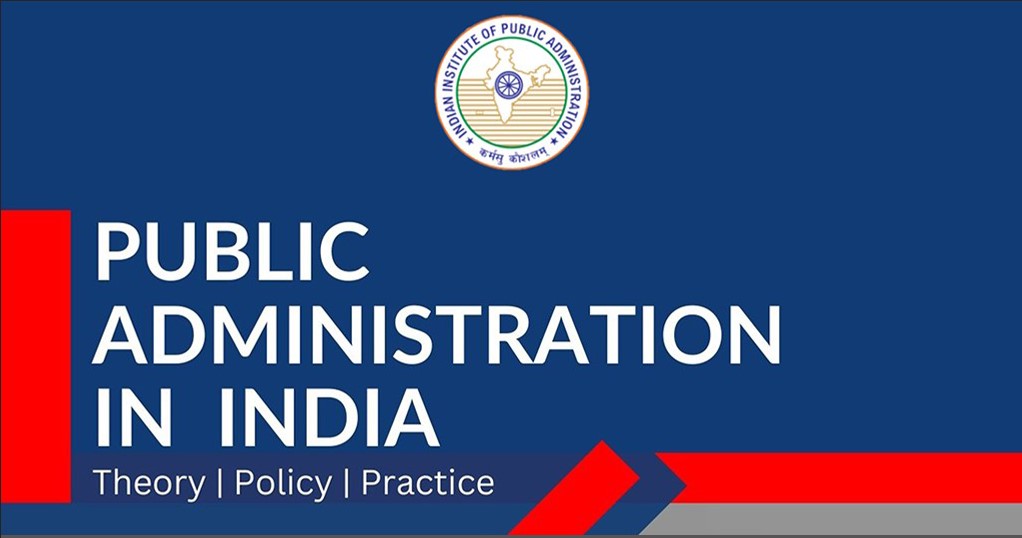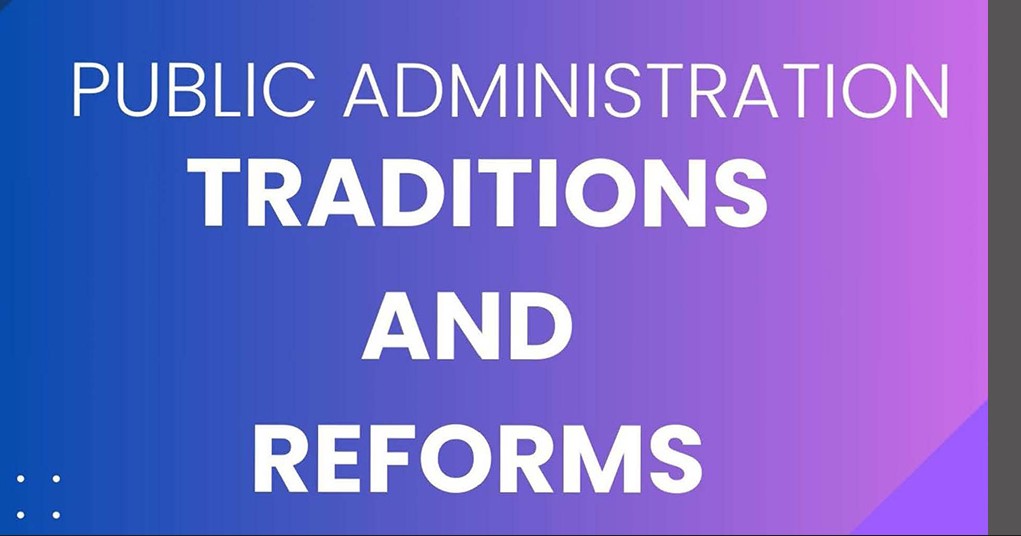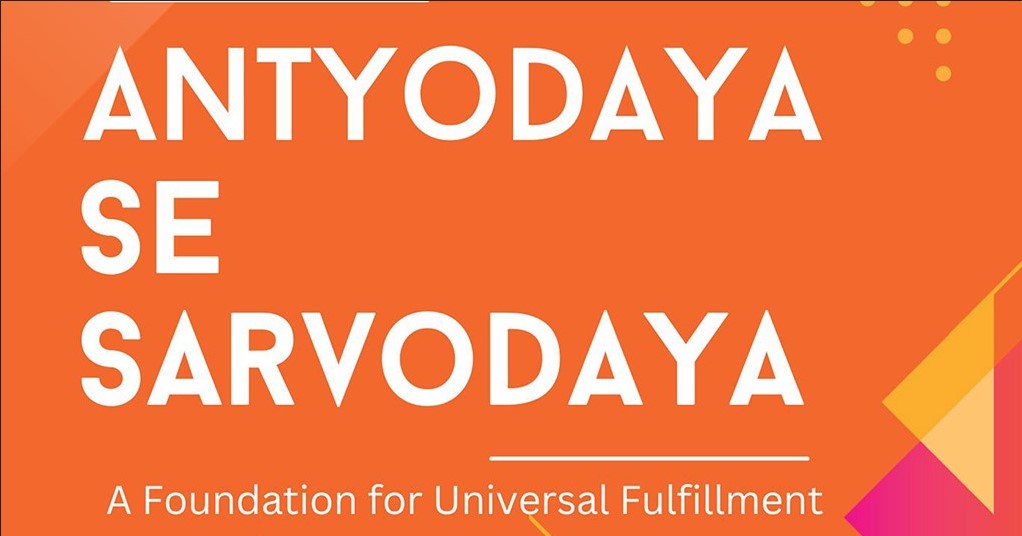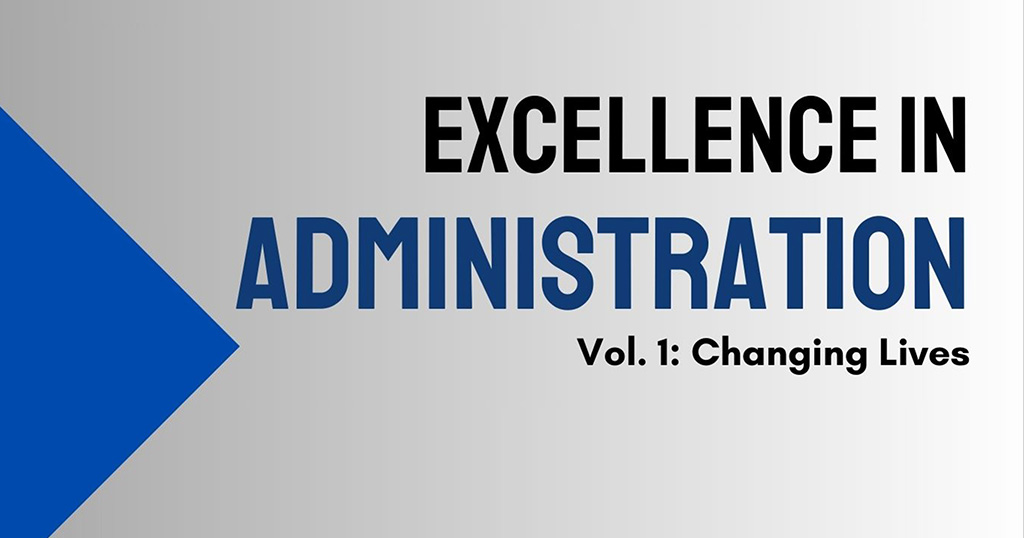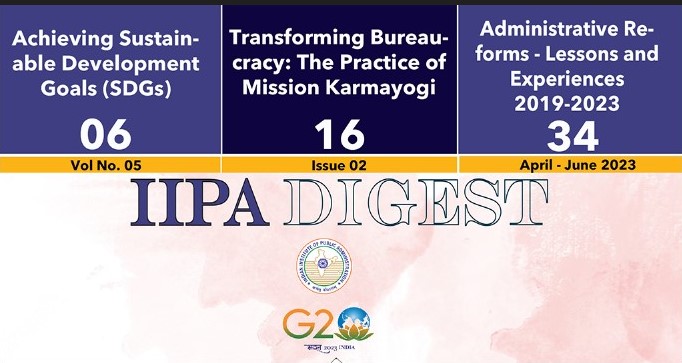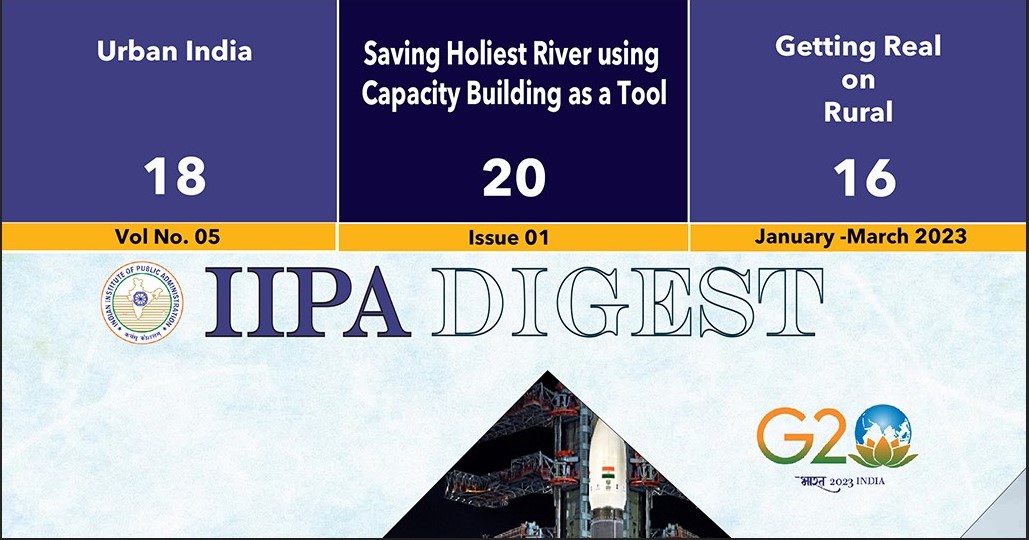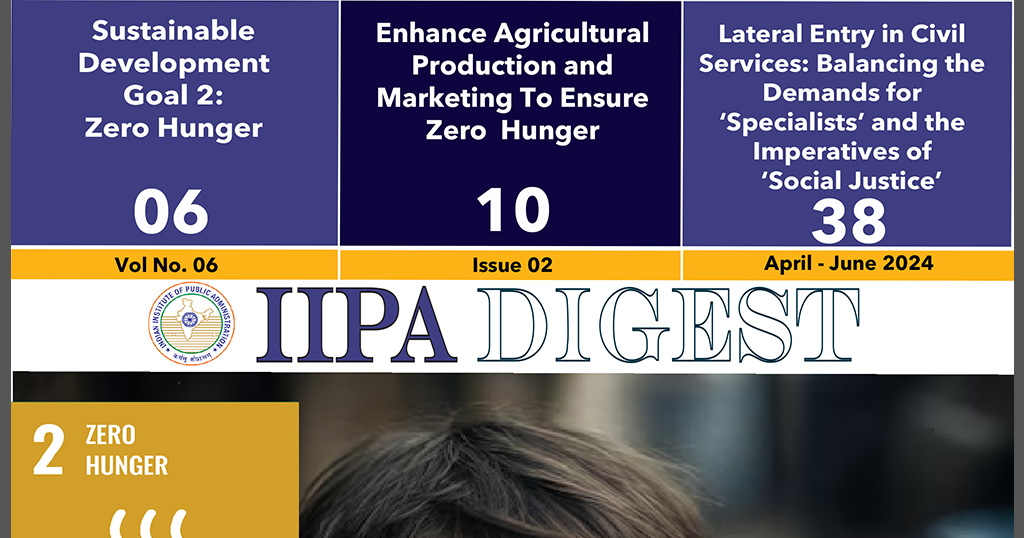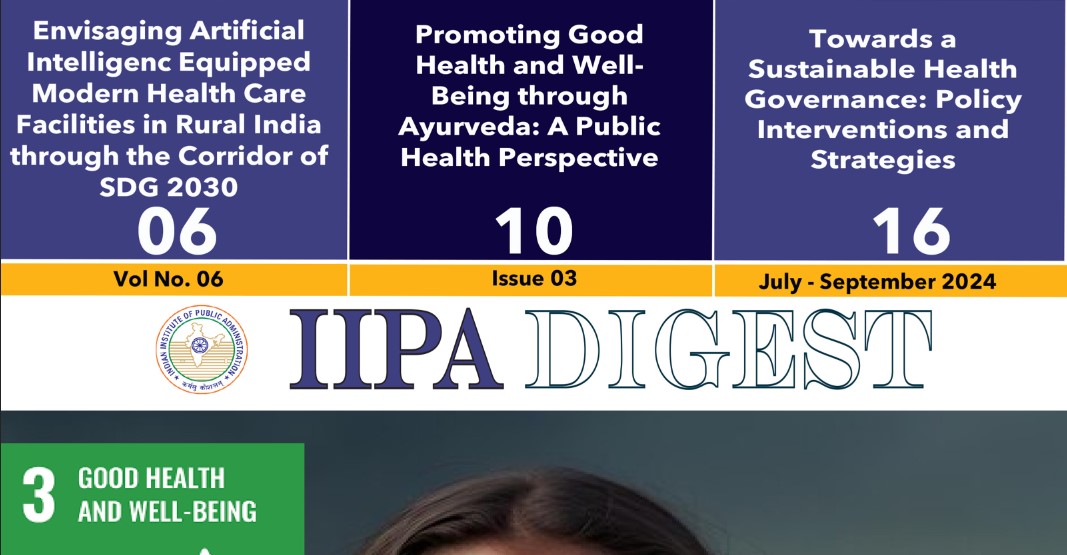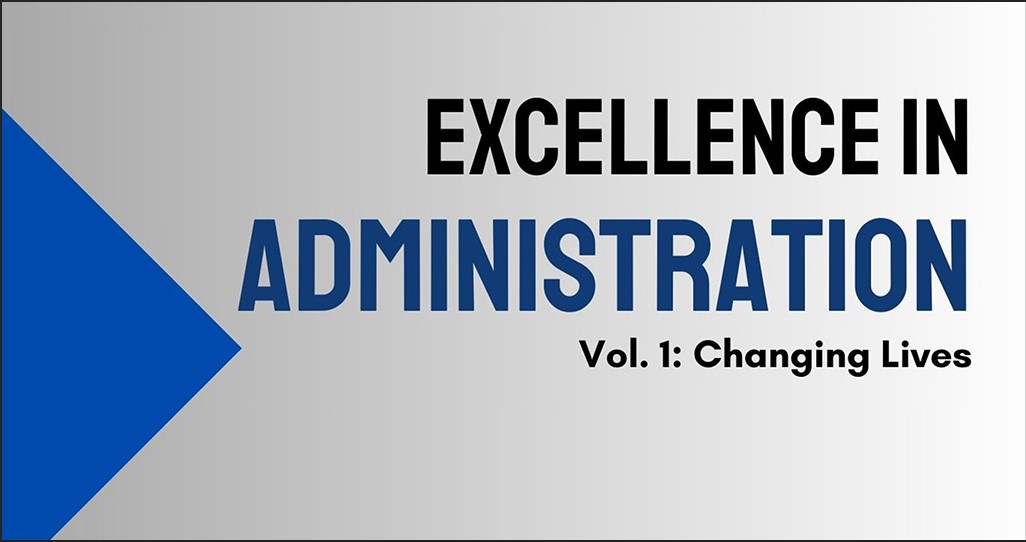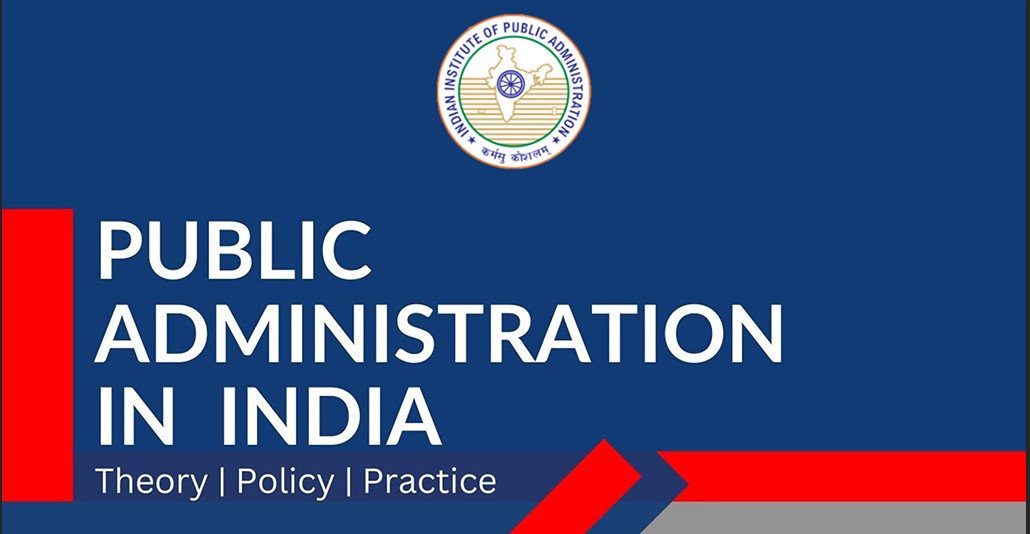Innovative Health Services in Latur: A Study of Primary Health Care Center Transformations
Introduction
Health is a fundamental human right and a critical indicator of development. The 2030 Agenda for Sustainable Development emphasizes the importance of ensuring health and well-being for all individuals. A key objective of this agenda is to guarantee favorable health outcomes, underscored by the endorsement of a new declaration during the Global Conference on Primary Health Care held in Astana, Kazakhstan, in October 2018. This conference highlighted the pivotal importance of primary health care on a global scale, reinforcing the notion that strengthening primary health care is essential for achieving Universal Health Coverage (UHC).
In recent years, India entered a new era of public health, particularly highlighted by the COVID-19 pandemic, which underscored the urgent need to bolster the public health system. The pandemic revealed both the strengths and weaknesses of India's social, economic, and health institutions, prompting a call to reflect, learn, and commit to building stronger, more resilient healthcare systems that ensure health security for all. Several clear lessons emerged from the global response to the pandemic: countries with robust public health and primary care systems saved more lives, those that empowered communities demonstrated resilience, and nations that engaged in research and development had a clear advantage in addressing health crises.
The initiation of the Ayushman Bharat – Health and Wellness Centers (AB-HWCs) in 2018 marked a significant step towards providing universal healthcare to all individuals, both in rural and urban areas. This initiative reflected the Indian government's resolve to enhance healthcare accessibility and quality. Over the past two years, substantial advancements were achieved across various states in India, with Maharashtra demonstrating notable improvements in key health metrics compared to the national average.
Despite these positive strides, Maharashtra continued to face significant health challenges. Approximately a quarter of the overall disease burden in the state stemmed from communicable, maternal, newborn, and nutrition-related ailments, while Non-Communicable Diseases (NCDs) accounted for a substantial 63%. The state fell within the higher-middle epidemiologic transitional level category, as indicated by the India State-Level Disease Burden 2017 report. Urban areas hosted nearly half of the state's population, with around 11% comprising elderly individuals.
This study aimed to evaluate two innovative healthcare schemes implemented by the District Health Department of Latur: the Sanjeevani Abhiyan for cancer screening and the Jeevan Rekha Kaksh for maternal mortality reduction. The research assessed the motives behind the implementation of these initiatives, their efficacy, the challenges encountered, and gathered feedback from patients and healthcare personnel through engagement with various stakeholders. Data collection involved visits to District Health Offices, interviews with designated officers overseeing the schemes, and visits to Health and Wellness Centers and Subcenters to gather insights on innovative healthcare programmes.
By examining these innovative health schemes, this study sought to contribute to the understanding of how targeted interventions could enhance healthcare accessibility, affordability, and quality, ultimately improving health outcomes for vulnerable populations in Latur District and beyond.
Background
Latur district, located in the Indian state of Maharashtra, faces the dual challenges of being drought-prone and heavily dependent on agriculture. According to the 2011 census, approximately 74.53% of Latur's population resides in rural settlements, with a total rural population of 1,829,216, comprising 949,707 males and 879,509 females. The district's sex ratio stands at 926 females for every 1,000 males, and the child sex ratio is 889 girls per 1,000 boys. The child population aged 0 to 6 years accounts for 13.28% of the total rural population. The literacy rate in rural areas of Latur is 75.11%, with male literacy at 82.96% and female literacy at 66.67%.
Historically, Latur has demonstrated notable achievements in public health initiatives. The district has been recognized for its effective implementation of the National Family Welfare Programme (NFWP) and has successfully controlled diseases such as polio and chikungunya. For instance, Latur district has reported zero polio cases since 1997, attributed to the efficient implementation of the Pulse Polio Immunization Campaign and routine immunization efforts.
The establishment of Health and Wellness Centers (HWCs) under the Ayushman Bharat scheme marked a significant advancement in Latur's healthcare landscape. The initiative aimed to transform existing healthcare facilities into fully functional HWCs capable of delivering a comprehensive range of services. By 2020-21, Latur district had successfully converted 46 Primary Health Centers (PHCs) and 187 Sub Centers into HWCs, significantly improving healthcare access for the rural population.
The innovative health schemes launched by the District Health Department, including the Sanjeevani Abhiyan for cancer screening and the Jeevan Rekha Kaksh for maternal mortality reduction, represent proactive efforts to address these critical health issues. These initiatives aim to enhance the accessibility and quality of healthcare services, ultimately improving health outcomes for residents. The Sanjeevani Abhiyan focuses on early detection and treatment of cancer, particularly among women, while the Jeevan Rekha Kaksh scheme targets high-risk pregnant women to reduce maternal mortality rates.
The implementation of these schemes has involved significant community engagement, with Accredited Social Health Activists (ASHAs) playing a crucial role in mobilizing women for screenings and health services. However, challenges such as stigma associated with cancer, logistical barriers to accessing healthcare facilities, and the need for continuous community education remain prevalent.
Literature Review
The literature on public health systems emphasizes the critical role of primary health care (PHC) in achieving Universal Health Coverage (UHC) and improving health outcomes, particularly in the context of India. The Alma-Ata Declaration of 1978 marked a pivotal moment in global health history, establishing a commitment to providing inclusive and high-quality healthcare accessible to all, both physically and financially. This declaration laid the groundwork for the World Health Organization's (WHO) Global Strategy for Health for All by the Year 2000 and the Sustainable Development Goals (SDGs), particularly SDG 3, which aims to ensure healthy lives and promote well-being for all at all ages.
Over the years, significant progress has been made in global health, resulting in an increase in life expectancy by around ten years since 1978 and a reduction of approximately two-thirds in the likelihood of dying before the age of five. However, the landscape of diseases has undergone significant changes, with chronic non-communicable diseases and injuries surpassing acute infections as leading causes of morbidity and mortality. This shift necessitates a revaluation of healthcare priorities and strategies.
The evolving world has witnessed significant shifts in economic, environmental, technological, and demographic realms, all of which exert an influence on health and well-being. Economic growth is intricately linked to advancements in health, serving both as a driving force and an outcome (World Health Organization, 2022). However, this progress has not been evenly distributed, with many nations experiencing rising within-country inequality alongside a series of economic shocks and crises that have severely impacted health and well-being (Smith & Johnson, 2023). Additionally, numerous countries have faced persistent conflict and fragility, leading to significant health challenges for their populations. An estimated 68.5 million individuals have been forcibly displaced from their homes, marking the highest figure on record (United Nations High Commissioner for Refugees, 2023). Climate change has been labeled as "the greatest global health threat of the 21st century," highlighting its profound impact on health and well-being, as it exacerbates the prevalence of extreme poverty (Intergovernmental Panel on Climate Change, 2021).
Primary Health Care (PHC) serves as a crucial mechanism for both society and healthcare institutions to tackle these issues. Through a multisectoral approach, PHC fosters collaboration among a wide range of stakeholders at both national and sub-national levels to explore and formulate policies aimed at addressing the social, economic, and environmental determinants of health and well-being (World Health Organization, 2020).
Over the past four decades, there has been notable progress in enhancing health and well-being, marked by declines in maternal, neonatal, and child mortality rates, as well as fatalities from HIV/AIDS, malaria, tuberculosis, and vaccine-preventable diseases (Global Health Observatory, 2022). Primary Health Care (PHC) has played a pivotal role in driving these advancements, supported by substantial evidence of its effectiveness (Berman et al., 2021). Research demonstrates that PHC effectively addresses major causes of illness and death while also reducing overall healthcare expenditures and enhancing efficiency (Starfield, 2019). This is achieved through improved access to preventive and promotive services, early diagnosis and treatment across a spectrum of conditions, and a people-centered approach to care that considers the holistic needs of individuals (World Health Organization, 2018).
However, the unfinished business of preventing child and maternal deaths persists, and the rise of lifestyle-related diseases has become a significant concern. Between 1990 and 2016, the proportion of disability-adjusted life years lost to non-communicable diseases (NCDs) increased from 44% to 61% globally, with low and middle-income nations experiencing the highest increases (Institute for Health Metrics and Evaluation, 2017). The burden of illness related to mental well-being has also been developing in recent decades and is increasingly recognized as a major and generally untreated scourge (World Health Organization, 2021). Addressing these complex health demands necessitates a multisectoral approach that incorporates health-promoting and disease-prevention policies, community-responsive solutions, and people-centered health services (United Nations, 2020).
The 2030 Agenda for Sustainable Development, accompanied by the 17 Sustainable Development Goals, presents an ambitious blueprint for global progress. Within this framework, SDG 3 specifically targets health and well-being, calling for endeavors to ensure healthy lifestyles and promote well-being across all age groups (United Nations, 2015). Attaining the targets set by SDG 3 necessitates the adoption of Primary Health Care (PHC) and integrated health services that prioritize primary care and public health functions, empowering individuals and communities (World Health Organization, 2022).
India's healthcare system has evolved significantly since independence, with a focus on primary healthcare established through various committees and policies. The foundation of primary healthcare in India was established through the recommendations put forth by the Bhore Committee in 1946. The National Health Mission (NHM) has been instrumental in improving healthcare delivery, particularly in rural areas, and encompasses various initiatives aimed at enhancing maternal and child health, immunization, and the management of communicable and non-communicable diseases.
Maharashtra has been at the forefront of healthcare development in India, successfully implementing national health programmes and achieving significant milestones in health indicators. The state has demonstrated notable achievements in various key metrics compared to the national average, yet it continues to grapple with challenges related to communicable diseases, maternal and child health, and the rising prevalence of NCDs. The literature emphasizes the need for targeted interventions, such as the Sanjeevani Abhiyan for cancer screening and the Jeevan Rekha Kaksh for maternal mortality reduction, to address these pressing health issues.
Overall, the literature underscores the importance of primary health care as a foundation for achieving UHC and improving health outcomes. It highlights the necessity of overcoming systemic barriers, enhancing community engagement, and ensuring the sustainability of health programmes. This study aims to contribute to the existing body of knowledge by evaluating the effectiveness of the Sanjeevani Abhiyan and Jeevan Rekha Kaksh schemes, providing insights that can inform future public health strategies in India and beyond.
Research Gaps in the Study
The existing literature on public health systems and primary health care (PHC) revealed several research gaps that this study aimed to address. Notably, there was a lack of detailed studies focusing on localized health interventions in rural and economically disadvantaged areas, as most research generalized findings across broader populations. Additionally, there was insufficient evaluation of innovative health schemes like the Sanjeevani Abhiyan and Jeevan Rekha Kaksh, which are crucial for improving health outcomes but lacked empirical assessment of their effectiveness.
Furthermore, while community engagement was emphasized in health initiatives, comprehensive studies exploring its influence on specific programmes were limited. The integration of traditional and modern healthcare practices also remained underexplored, as did the interplay between socioeconomic factors and health outcomes in specific regions. Most existing research was cross-sectional, highlighting the need for longitudinal studies that track the long-term impact of health interventions.
This study addressed these gaps by focusing on Latur District, Maharashtra, and rigorously evaluating the effectiveness of the Sanjeevani Abhiyan and Jeevan Rekha Kaksh schemes. It captured community perspectives through qualitative interviews, examined the integration of traditional practices with modern health systems, and considered the influence of socioeconomic factors on health outcomes. By providing a longitudinal perspective on health interventions, this research contributed valuable insights that can inform policymakers and healthcare providers in enhancing public health systems and improving health outcomes.
Objectives
The primary objective of this study was to evaluate the effectiveness of innovative healthcare initiatives in Latur District, Maharashtra, specifically the Sanjeevani Abhiyan Scheme for cancer screening and the Jeevan Rekha Kaksh Scheme aimed at reducing maternal mortality. The study sought to assess the impact of the Sanjeevani Abhiyan on cancer screening rates among women, identifying barriers to participation and the programme's effectiveness in early detection. Additionally, it aimed to evaluate the Jeevan Rekha Kaksh Scheme's effectiveness in reducing maternal mortality by examining the quality of antenatal and postnatal care for high-risk pregnant women.
The study also focused on analyzing the role of Health and Wellness Centers (HWCs) in implementing these schemes, exploring the perspectives of healthcare providers and community members regarding their success and challenges. Furthermore, the study investigated the influence of socioeconomic factors on the accessibility and effectiveness of the health schemes. Ultimately, the study aimed to provide recommendations for improving the implementation and sustainability of these initiatives, contributing to enhanced healthcare delivery in Latur District and similar contexts. The following research questions were formulated to fulfil these objectives:
1. Were the innovative schemes, namely the Sanjeevani Abhiyan and Jeevan Rekha Kaksh, effective in improving healthcare outcomes for the population in Latur District?
2. What were the major challenges faced by the District Health Department in implementing the Sanjeevani Abhiyan and Jeevan Rekha Kaksh schemes?
3. How effective were the Health and Wellness Centers in implementing these innovative schemes?
Innovative Healthcare Services in Latur
Latur district has made significant strides in enhancing its healthcare delivery system through the implementation of innovative healthcare services. These initiatives, primarily driven by the District Health Department, aim to address critical health challenges faced by the population, particularly in rural areas. Two notable schemes that exemplify this innovative approach are the Sanjeevani Abhiyan for cancer screening and the Jeevan Rekha Kaksh for maternal mortality reduction.
Sanjeevani Abhiyan
The Sanjeevani Abhiyan was launched in the year 2001 to promote early detection and treatment of cancer, particularly among women. Recognizing the stigma and cultural barriers associated with cancer screening, the initiative employed a proactive outreach strategy that involved home visits by Accredited Social Health Activists (ASHAs). Through these visits, ASHAs were able to educate women about the importance of early detection and encourage them to participate in screening programmes.
In 2023, the programme successfully contacted over 342,000 women aged 30 and above, identifying 3,958 suspected cases of cancer. Of these, 3,425 women were mobilized for further evaluation and testing at designated Health and Wellness Centers (HWCs) and higher-level healthcare facilities. The provision of free transportation and meals for participants significantly reduced barriers to access, demonstrating the effectiveness of community engagement in health initiatives.
Health and Wellness Centers (HWCs)
The establishment of Health and Wellness Centers (HWCs) under the Ayushman Bharat scheme has been a transformative step in Latur's healthcare landscape. By converting existing Primary Health Centers (PHCs) and Sub Centers into fully functional HWCs, the district has significantly improved healthcare access for the rural population. As of 2020-21, Latur district successfully operationalized 233 HWCs, comprising 46 PHCs and 187 Sub Centers.
These centers provide a comprehensive range of services, including preventive care, treatment for common illnesses, maternal and child health services, immunizations, and health education. The HWCs have also conducted 27,475 wellness activities, such as yoga sessions and health talks, aimed at promoting healthy lifestyles within the community.
Jeevan Rekha Kaksh
The Jeevan Rekha Kaksh scheme was implemented in 2017 in the state of Madhya Pradesh to reduce maternal mortality rates by providing comprehensive antenatal and postnatal care to high-risk pregnant women. This initiative focused on improving the quality of care through regular monitoring and support for expectant mothers. The scheme aimed to ensure that high-risk pregnancies received timely medical attention, thereby preventing complications that could lead to maternal deaths.
The implementation of the Jeevan Rekha Kaksh involved training healthcare providers to deliver quality care and establishing a robust referral system for high-risk cases. By enhancing the accessibility of maternal health services, the scheme has contributed to improved health outcomes for mothers and newborns in the district.
Impact of Innovative Healthcare Services
The innovative healthcare services implemented in Latur have led to notable improvements in health outcomes. The Sanjeevani Abhiyan has increased awareness and participation in cancer screening, while the Jeevan Rekha Kaksh has enhanced maternal health services, contributing to a reduction in maternal mortality rates. The operationalization of HWCs has facilitated greater access to healthcare, with a significant increase in outpatient department (OPD) visits, rising from 1.5 lakh in 2017-18 to 9.4 lakh in 2021-22.
These initiatives underscore the importance of targeted interventions in addressing public health challenges and improving healthcare delivery in rural areas. By fostering community engagement and leveraging local resources, Latur district has set a precedent for other regions in India, demonstrating how innovative health services can effectively enhance healthcare accessibility, affordability, and quality.
Health Outcomes
Quantitative Data Analysis
Table 1: Health Outcomes in Maharashtra Compared to India
The table compares key health outcomes in Maharashtra with national averages, revealing notable strengths and challenges. Maharashtra has a Maternal Mortality Ratio (MMR) of 46, significantly lower than India's 113, and an Infant Mortality Rate (IMR) of 19 compared to India's 32, indicating better maternal and infant health outcomes. The Under-Five Mortality Rate is also lower in Maharashtra at 22, while the Neonatal Mortality Rate stands at 13, compared to India's 23. However, concerning trends in child nutrition are evident, with 9.4% of children under five severely wasted in Maharashtra, exceeding the national average of 7.5%, and 36% underweight, slightly higher than India's 35.8%. Additionally, 49.3% of pregnant women in Maharashtra are anaemic, marginally better than the national average of 50.4%. The tuberculosis notification rate is 86 in Maharashtra, lower than India's 100, highlighting effective disease management. Overall, while Maharashtra excels in maternal and child health, addressing malnutrition and anaemia remains critical.
Table 2: Service Delivery Metrics
Maharashtra reports 99.4% institutional deliveries compared to India’s 94.5%, though only 49% occur in public institutions against the national average of 67.9%, indicating greater reliance on private healthcare. The state surpasses national figures in family planning, with 62.6% of married women’s needs met through modern methods compared to India’s 47.8%, alongside a lower unmet need of 9.7% compared to 12.9%. However, child immunization lags at 56.2%, below India’s 62%, signaling gaps in preventive care. Positively, 60.5% of children with diarrhoea receive ORS compared to India’s 50.6%, reflecting stronger disease management. While Maharashtra excels in maternal care access and family planning, bolstering public health services and immunization coverage is essential to bridge gaps.
Qualitative Data Analysis
• Community Engagement
Participants emphasized the importance of community health workers, particularly ASHAs, in mobilizing women for cancer screening and maternal health services. Many women reported that home visits by ASHAs significantly increased their awareness and willingness to participate in health screenings.
• Barriers to Participation
Despite the successes, several barriers to participation were identified. Stigma associated with cancer screening, lack of awareness about the importance of early detection, and logistical challenges in accessing health facilities were common concerns among participants.
• Quality of Care
Feedback from beneficiaries indicated a high level of satisfaction with the quality of care received at Health and Wellness Centers. Many participants noted improvements in the availability of services and the professionalism of healthcare providers, which contributed to their trust in the healthcare system.
• Socioeconomic Influences
The analysis revealed that socioeconomic factors played a significant role in access to health services. Women from lower socioeconomic backgrounds faced more challenges in participating in the health schemes, highlighting the need for targeted outreach efforts to ensure equitable access.
Recommendations
1. Strengthen Community Engagement: Enhance the role of community health workers, particularly ASHAs, in mobilizing women for cancer screening and maternal health services. Implement targeted outreach programmes to raise awareness about the importance of early detection and participation in health schemes.
2. Address Barriers to Participation: Develop strategies to overcome stigma associated with cancer screening and improve logistical support for accessing health facilities. This may include transportation services for women participating in screening programmes.
3. Enhance Healthcare Infrastructure: Invest in improving road connectivity and infrastructure at Health and Wellness Centers (HWCs) and Sub-Centers to ensure timely access to emergency care. Address the issue of non-functional Sub-Centers to provide equitable healthcare access.
4. Increase Public Health Financing: Advocate for an increase in public health funding to at least 2.5% of GDP, as recommended by the World Health Organization. This funding should support the expansion of health services, infrastructure improvements, and workforce training.
5. Decentralize Medicine Procurement: Empower local governance structures, such as Gram Panchayats, to manage medicine procurement and distribution. This will enhance responsiveness to local health needs and reduce shortages.
6. Expand Non-Communicable Disease (NCD) Screening: Implement comprehensive NCD screening programmes for both men and women, ensuring that preventive care is accessible to all demographics. This should include awareness campaigns about lifestyle-related diseases.
7. Leverage Technology for Health Services: Utilize teleconsultation and digital health platforms to improve access to healthcare services, especially in remote areas. Expand the use of patient feedback systems to enhance accountability and service quality.
8. Focus on Maternal and Child Health: Continue to prioritize maternal and child health initiatives, ensuring that antenatal and postnatal care services are comprehensive and accessible to high-risk populations.
9. Monitor and Evaluate Health Programmes: Establish robust monitoring and evaluation frameworks for health schemes like the Sanjeevani Abhiyan and Jeevan Rekha Kaksh. This will help assess their effectiveness, identify challenges, and inform future improvements.
10. Promote Intersectoral Collaboration: Foster collaboration between health, education, and social sectors to address the social determinants of health. This holistic approach will enhance the overall effectiveness of health interventions.
Conclusion
The study highlight Maharashtra’s progress in advancing primary healthcare through Ayushman Bharat, particularly in Latur district, where HWCs and innovative programmes like Sanjeevani Abhiyan have enhanced service delivery and equity. However, systemic challenges—infrastructure deficits, funding gaps, workforce shortages, and inconsistent outreach—impede universal health coverage. The COVID-19 pandemic and fluctuating ANC/TB trends further expose vulnerabilities in preventive care and emergency response.
Latur’s success in operationalizing HWCs and cancer screening offers a replicable model, yet sustained progress demands prioritizing public health financing (2.5% GDP allocation), decentralized governance (e.g., Gram Panchayat-led procurement), and intersectoral collaboration to address social determinants of health. Strengthening rural infrastructure, ensuring ambulance service reliability, and expanding NCD screening to men are critical.
Ultimately, achieving holistic healthcare in Maharashtra hinges on bridging the gap between policy intent and grassroots implementation. By addressing inequities, leveraging PPP models, and institutionalizing community feedback mechanisms, the state can transform its primary healthcare system into a resilient, inclusive framework aligned with global health goals.
References
1. Ayushman Bharat Health and Wellness Centres (AB-HWC) Title: Success stories from the field (2023). Retrieved from:
https://nhsrcindia.org/sites/default/files/2024-01/AB- HWC%20Success%20Stories%202023.pdf.
2. Gaikar, B., Vilas (2021 Nov 21). Public health schemes in India. A case study of Maharashtra state. Retrieved from
https://www.researchgate.net/publication356253.
3. Islam, Q. M. (2021). Innovations in Primary Health Care in the twenty-first century. Sage Journals. https://journals.sagepub.com>doi
4. Jagran, J. (2021). Top Health Schemes by Government. Current Affairs. Retrieved from
https://www.jagranjosh.com/currentaffairs
5. Karmakar, K. G. (2022). Affordable Health Care Systems in India. Bluerose Publishers.
6. Mahapatra, Prasanta, Khetrapal, Nagarajan, Sonalini, Shyama (2022). An assessment of the Maharashtra State Health Systems. ADB Periodicals. https://dx.doi.org/10.22617/WPS220063
7. Ministry of Health and Family Welfare. (2020-21). Rural Health Statistics. Retrieved from
https://main.mohfw.gov.in/files/rhs20-21
8. Ministry of Health and Family Welfare, Government of India. (April 2018-November 2020). Towards Universal Health Coverage, Ayushman Bharat Health and Wellness Centres: A compendium of Health and Wellness Centres Operationalization. Retrieved from
https://nhm.gov.in/uhcday/Session%202/Towards%20Universal%20Health%20Coverage_HWC Compendium.pdf
9. Ministry of Health and Family Welfare. (2022). India Public Health Standards, 2022: vol III (Health and Wellness Centers-Primary Health Center). National Health Systems Resource Center.
10. National Health Mission, Maharashtra. (2021). Retrieved from
https://nrhm.maharashtra.gov.in/grc.htm
11. National Health Mission. (n.d.). National Programme for Prevention & Control of Cancer, Diabetes, Cardiovascular Diseases & Stroke (NPCDCS). Retrieved from
https://nhm.gov.in/index1.php?lang=1&level=2&sublinkid=1048&lid=604
12. Qadeer, I., Saxena, K. B., Arathi, P. M. (2019). Universalising Health Care in India. Aakar Books.
13. 13. Sundar, D. K., Garg, I., Garg, S. (2015). Public Health in India: Technology, governance and service delivery. (Edition 1). Routledge India.
14. World Health Organization. (10 Dec 2018). A vision for Primary Health Care in 21st Century: Towards universal health coverage and sustainable development goals. Retrieved from: file:///C:/Users/Acer/Desktop/WHO%20HEALTH.pdf
Leave a comment
More articles from Governance & Polity
